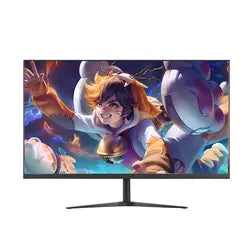
Aug 2023
0 Comments
MackTech Biz
Understanding Monitor Panel Types and Panel Grades
Introduction
Selecting the right monitor panel type and grade is paramount for achieving optimal visual experiences across various tasks. From graphic design to gaming, the choice of panel type and grade significantly impacts color accuracy, response times, and overall display quality.
I. Monitor Panel Types
A. Introduction to Panel Types
Monitor panel types refer to the underlying technology used to produce images on the screen. Each type has unique attributes that influence factors like color reproduction, viewing angles, and response times.
B. Common Panel Types
-
TN (Twisted Nematic) Panels
- TN panels provide fast response times (1ms) suitable for gaming.
- Limited viewing angles and inferior color accuracy due to pixel alignment.
- Often chosen for gaming monitors where speed is a priority.
-
IPS (In-Plane Switching) Panels
- IPS panels offer accurate colors and wide viewing angles (up to 178°).
- Slower response times than TN panels (4-5ms), making them suitable for content creation.
- Ideal for graphic designers and professionals requiring color precision.
-
VA (Vertical Alignment) Panels
- VA panels provide high contrast ratios and deep blacks.
- Moderate response times (5-8ms) and relatively good color accuracy.
- Suited for multimedia tasks and movie watching.
-
OLED (Organic Light-Emitting Diode) Panels
- OLED panels offer true blacks, infinite contrast, and fast response times.
- Self-emissive pixels allow for individually controlled light, resulting in vibrant colors.
- Found in high-end displays and TVs, offering exceptional picture quality.
C. Emerging Technologies
- MicroLED: Utilizes microscopic LEDs for enhanced brightness and longevity.
- MiniLED: Offers improved local dimming zones for better contrast control.
- Quantum Dot: Enhances color accuracy by using nano-sized semiconductor particles.
II. Panel Grades
A. Introduction to Panel Grades
According to the quality of the screen panel, LCD, it can be divided into three levels: A, B, and C, and the basis for the classification is the number of dead pixels
B. Factors Influencing Panel Grades level
-
Color Accuracy and Uniformity
- Panel grading considers color accuracy across different color spaces (sRGB, AdobeRGB).
-
Brightness and Contrast Ratio
- Higher-grade panels offer higher brightness (measured in nits) and better contrast ratios.
-
Viewing Angles
- Grade assessment includes consistent image quality across wide viewing angles.
-
Response Time and Refresh Rate
- Lower response times and higher refresh rates contribute to higher grades.
-
Pixel Defects
- Panels are graded based on the presence of dead pixels, stuck pixels, and backlight bleeding.
C. Common Panel Grade Categories
-
A+ Grade
- Screen without any dead pixels is called A+ grade level screen. Through the professional testing software test, there are no bright spots in the power-on state, no dark spots after the display screen, and the display screen is stable and smooth. A+ grade screen is the highest quality LCD screen, suitable for display fields with extremely high display quality requirements, such as LCD monitors, vehicle displays, medical displays, etc.
-
A- Grade
- The total number of dead pixels does not exceed 3, and there can only be one bright spot at most, and the bright spot is not in the central area of the screen, we call it A-class LCD screen. The screen display is still high-quality and smooth, and there is generally no obvious dead pixel feeling during use. General application and LCD TV, home appliance display and other fields..
-
B- Grade
- The total number of dead pixels does not exceed 5, and the bright spot can only have 2 at most, and the bright spot is not in the central area of the screen, which is called a B-level LCD screen. The brightness of the screen is relatively uneven, and the color saturation is relatively insufficient. Most of the cheap LCD monitors use this type of B-level panel, and the cost is relatively economical and cheap.
-
C- Grade
- In addition to the dead pixel of the LCD screen, the screen with line defects is called a C-level LCD screen. A line defect refers to a bright line or a dark line on the screen, which is a display defect formed by a short circuit or an open circuit in the screen. The image color reproduction ability of the c-class LCD screen is poor, and the appearance may even be damaged. It is basically not used in large-screen products. Most of the LCD panels that are cut into small areas are used in small-sized display fields.
III. Choosing the Right Panel Type and Grade
A. Identifying Use Case
- Consider panel types and grades aligned with your primary tasks (gaming, design, office work).
B. Budget Considerations
- Higher grades and advanced panel types often come at a premium cost.
C. Comparing Features
- Create a checklist to compare specifications, including color accuracy, response times, and more.
Conclusion
Selecting the optimal monitor panel type and grade requires a balance between technology, performance needs, and budget constraints. Understanding the nuances of each panel type and grade empowers users to make informed decisions that align with their specific requirements.

